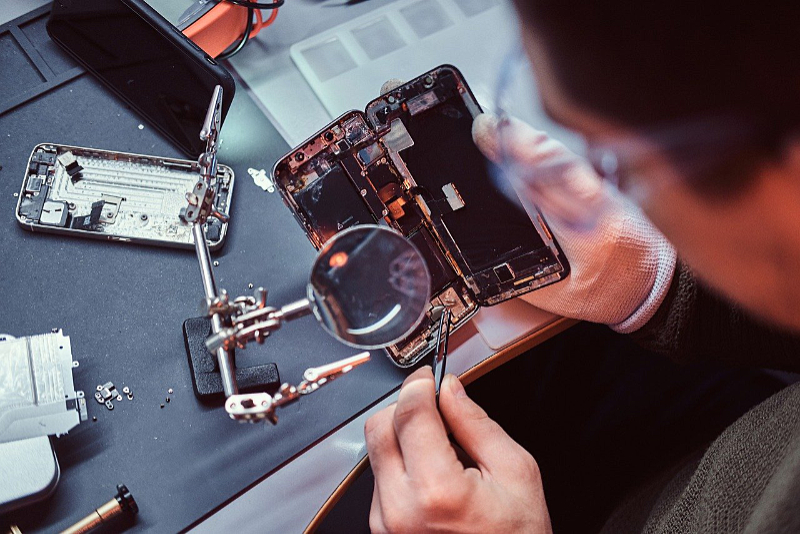
Photo: Militiamobiles/Pixabay
StatePoint Media - From listening to music to watching movies, connecting with family to counting steps, Americans say in a new study that they depend on their smartphones like never before. And they are putting their money where their mouth is. The amount of money they spent on screen repairs surged to $8.3 billion in 2023, nearly tripling the amount spent in 2018 ($3.4 billion).
In its latest Mobile Mythconceptions Survey, Allstate Protection Plans found that despite the rising amount spent on smartphone repair, Americans are actually damaging their devices less frequently. In the past 12 months, 78 million Americans reported damaging a device compared to 87 million during a comparable period in 2020.
Cost Conscious Consumers
Last year, the three most frequent accidents and malfunctions reported were: damaged screens (67%), Wi-Fi or connectivity issues (28%) and touchscreen problems (24%).
When Americans do damage their phones, repair costs remain a significant concern for many. In fact, 49% of Americans would not repair a damaged smartphone that still functions due to the high costs involved. This could be in part due to sticker shock and misconceptions around the cost of smartphone ownership. The survey found that the average cost for repairs and replacements is now $302, yet 47% of Americans think repairs cost $150 or less. The top reason given by respondents who have damaged a smartphone for avoiding or delaying repairs was the cost, with 39% saying they could not afford it. The Race to Repair
Smartphones have taken center stage, with 45% of smartphone owners spending five or more hours a day glued to their screens and the overwhelming majority saying their phone has completely replaced their digital camera. So it’s no surprise that despite cost concerns, many American smartphone owners don’t delay when dealing with damage, with 27% saying they would initiate screen repairs within a day due to the importance of their phones in everyday life. When it comes to broken buttons, 36% say they would wait a day or less to repair their phone, 30% for damaged speakers, 29% for broken microphones and 22% for broken cameras. The good news? With a high-quality case, you can help prevent damage, and with a protection plan in place, you can avoid hefty out-of-pocket costs when mishaps do occur. For information on plans, which cover repair costs on everything from battery failure and cracked screens to liquid damage and touchscreen failure, and which are available to both individuals and families, visit AllstateProtectionPlans.com. Since the introduction of the smartphone, Americans have spent $149 billion on repairs and replacements. By taking a few precautionary measures, smartphone ownership can be a much more affordable prospect.
Last year, the three most frequent accidents and malfunctions reported were: damaged screens (67%), Wi-Fi or connectivity issues (28%) and touchscreen problems (24%).

Philipp Zurawski/Pixabay
When Americans do damage their phones, repair costs remain a significant concern for many. In fact, 49% of Americans would not repair a damaged smartphone that still functions due to the high costs involved. This could be in part due to sticker shock and misconceptions around the cost of smartphone ownership. The survey found that the average cost for repairs and replacements is now $302, yet 47% of Americans think repairs cost $150 or less. The top reason given by respondents who have damaged a smartphone for avoiding or delaying repairs was the cost, with 39% saying they could not afford it. The Race to Repair
Smartphones have taken center stage, with 45% of smartphone owners spending five or more hours a day glued to their screens and the overwhelming majority saying their phone has completely replaced their digital camera. So it’s no surprise that despite cost concerns, many American smartphone owners don’t delay when dealing with damage, with 27% saying they would initiate screen repairs within a day due to the importance of their phones in everyday life. When it comes to broken buttons, 36% say they would wait a day or less to repair their phone, 30% for damaged speakers, 29% for broken microphones and 22% for broken cameras. The good news? With a high-quality case, you can help prevent damage, and with a protection plan in place, you can avoid hefty out-of-pocket costs when mishaps do occur. For information on plans, which cover repair costs on everything from battery failure and cracked screens to liquid damage and touchscreen failure, and which are available to both individuals and families, visit AllstateProtectionPlans.com. Since the introduction of the smartphone, Americans have spent $149 billion on repairs and replacements. By taking a few precautionary measures, smartphone ownership can be a much more affordable prospect.











